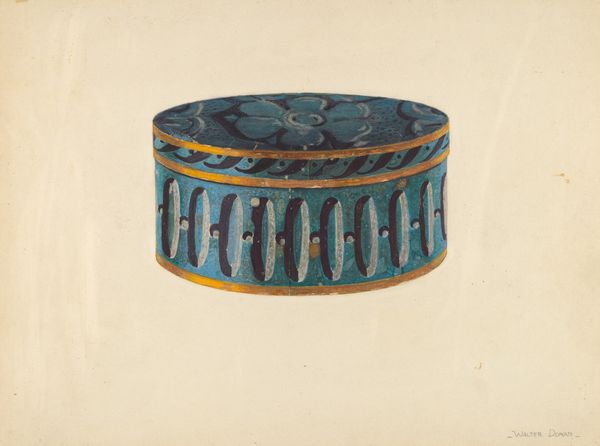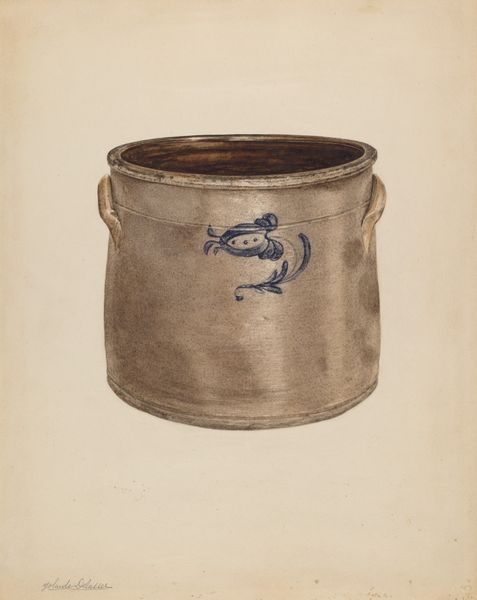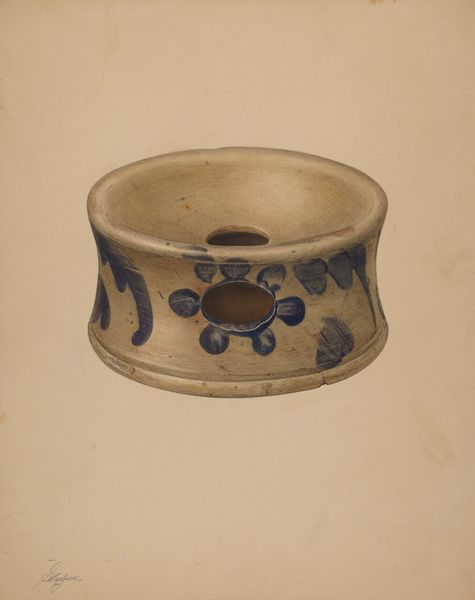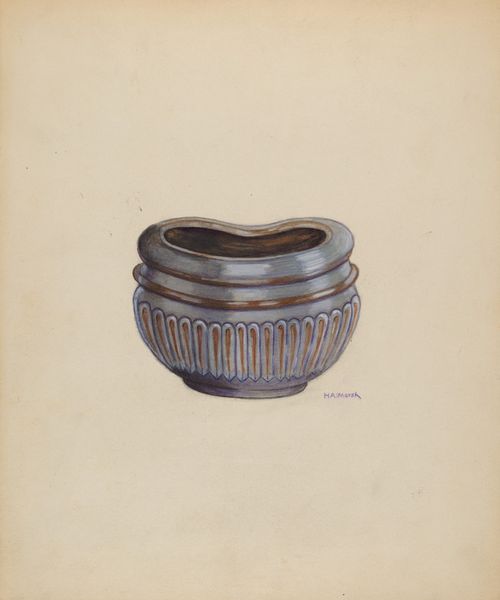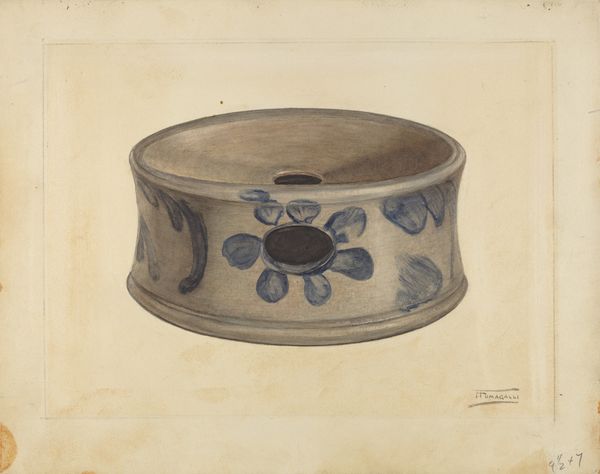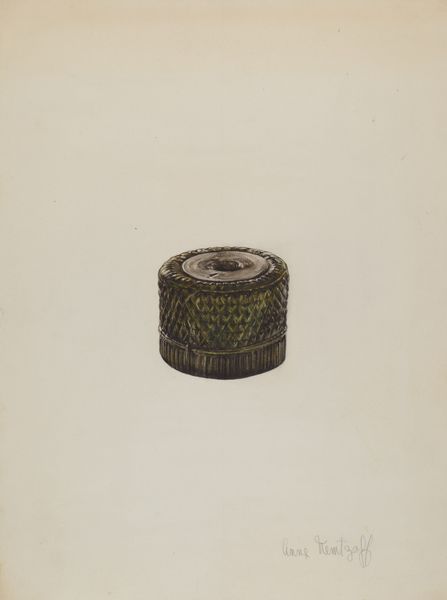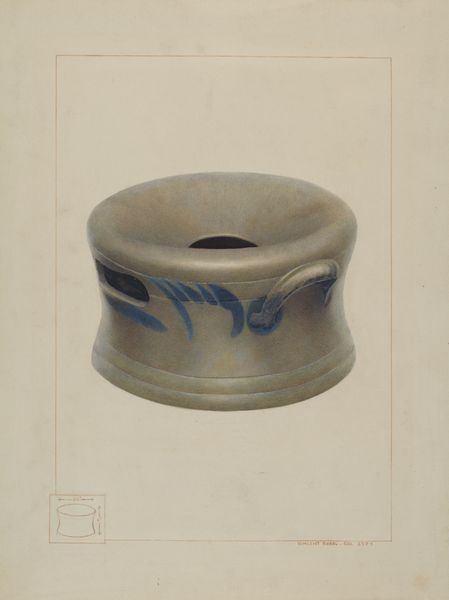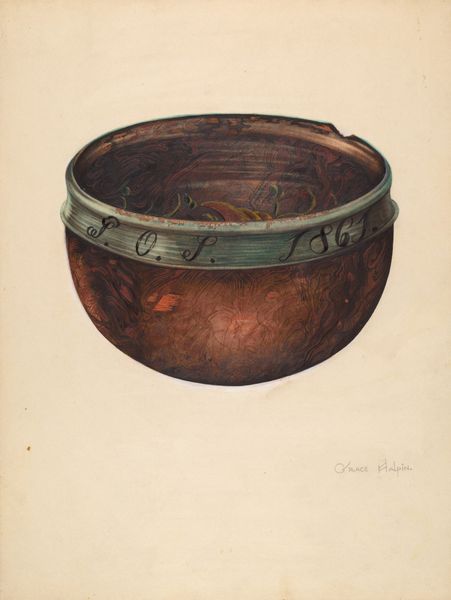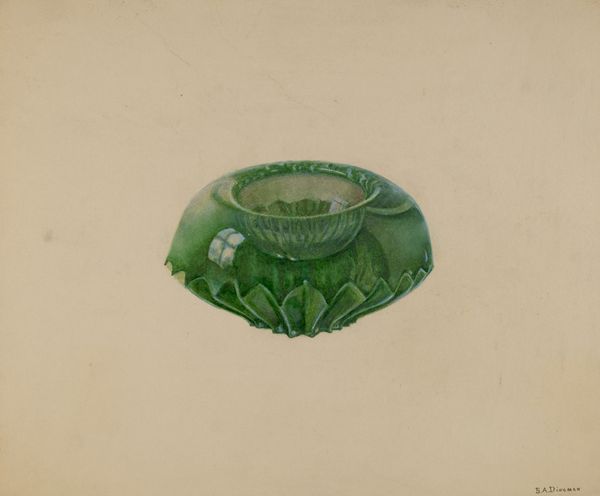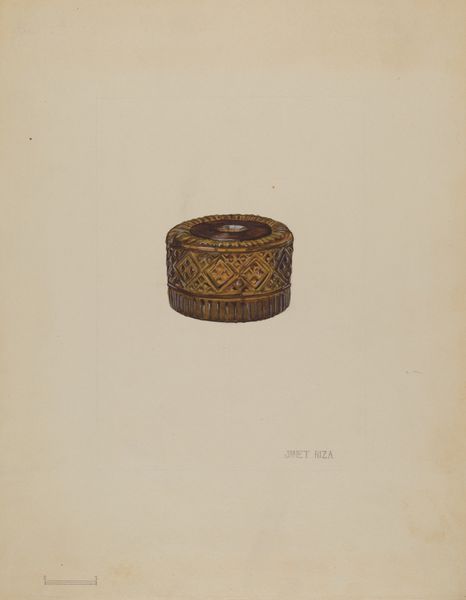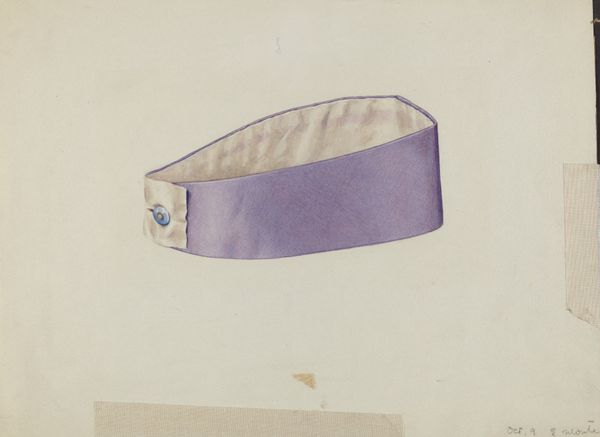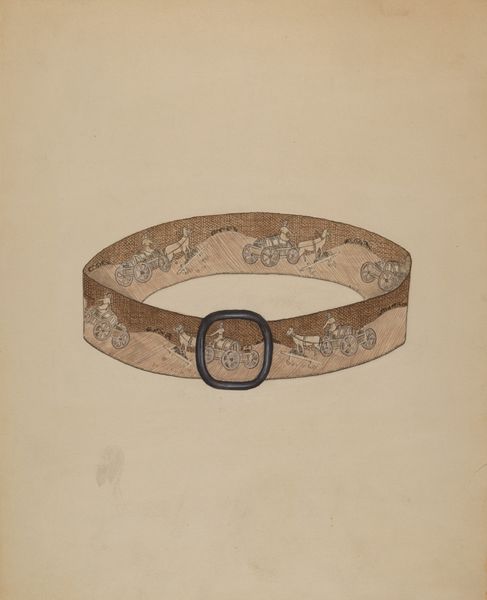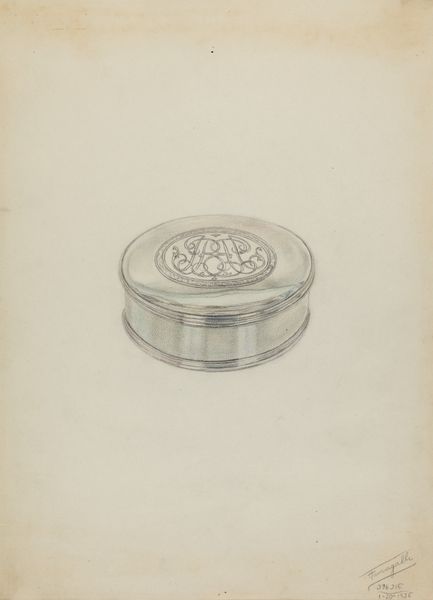
drawing, ceramic, watercolor
#
drawing
#
water colours
#
ceramic
#
watercolor
#
geometric
#
ceramic
#
watercolor
Dimensions: overall: 30.4 x 36 cm (11 15/16 x 14 3/16 in.) Original IAD Object: 2 3/16" High 5 1/2" Dia(top) 5 1/2" Dia(base)
Copyright: National Gallery of Art: CC0 1.0
Curator: Here we have John Tarantino’s "Inkwell," created around 1939 using watercolor and ceramic materials. It's quite a straightforward rendering, wouldn't you say? Editor: It strikes me as almost… melancholy. The soft blues and muted tones give it a somber feel, even though it's just an inkwell. There's a quiet stillness about it. Curator: Exactly. Tarantino’s choice to depict such a mundane object elevates it. This isn’t just about an inkwell; it's about the cultural significance of writing and documentation during the pre-war period, how everyday items held a particular kind of value. Editor: I'm intrigued by that “everyday value” idea. In a society rapidly mechanizing, handcrafts were on the brink of obsolescence, which imbued them with symbolic weight. Also, seeing the name "GEO. CRAWFORD" emblazoned so prominently makes me wonder: Whose inkwell was this? What kind of power did written language hold for this person? Curator: These kinds of questions allow us to understand how personal histories intersect with broader socio-economic changes. Writing, back then, was often linked to class mobility, or asserting one's place within a structured system. Editor: So this wasn't just about jotting down grocery lists; it was potentially about engaging directly with systems of power. It does make me think, though, about how the "neutrality" of still life can be misleading, because the choice of the object itself always tells a story about cultural values. Curator: Precisely! And how those values often upheld specific hierarchies. Consider who had access to literacy and writing tools at that time. That is why artworks like this one continue to spark vital dialogues around cultural practices. Editor: Absolutely. Seeing it through the lens of access and power illuminates aspects one might easily overlook. Curator: Agreed. Thanks for adding a different perspective to this artwork. Editor: My pleasure, there's always more to consider than meets the eye.
Comments
No comments
Be the first to comment and join the conversation on the ultimate creative platform.
